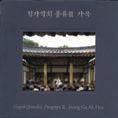Gagok, Pungnyu III
Author: Keith Howard
View album and artist detailsAlbum and Artist Details
Artist/band: |
Jeong Ga Ak Hoe |
Label: |
Akdang Eban |
Magazine Review Date: |
Apr/May/2012 |
This is a beautifully packaged atmospheric recording, but one that may take some getting used to. The gagok repertoire, protected in Korea as ‘Intangible Cultural Property 30, comprises 26 long and slow lyric songs. Each sets a poem about nature, philosophy or life to music, and shares formulaic elements: a short instrumental opening, then five sections set to 16-or 10-beat cycles that stretch out what are essentially three lines of poetry. Each ends abruptly, releasing tension without any emotional release in a way that matches Confucian etiquette. The ensemble of instruments, arranged around the meditative singer, comprises plucked zithers, haegeum (fiddle), daegeum (flute), piri (oboe) and drums – instruments familiar to the Confucian literati of old. The oldest of the songs was first notated in 1572, and the CD captures something of the past by being recorded in an aristocratic family's lineage house in the south-eastern Korean countryside. Imagine wooden floors, papered windows, and appropriate geomantic features. And, yes, cicadas at times call in the background. This album showcases nine songs, all for female voice; the young-generation singer, Kim Yeonsu, is considered to sing particularly faithfully to a long line of distinguished exponents. She is joined by the esteemed group Jeong Ga Ak Hoe, who always aim to keep things traditional. The album continues the sterling work of the Akdang company in trying to capture the distinctiveness of Korea. Notes are in (good) English as well as Korean, with transliterations rather than direct translations of poems.

